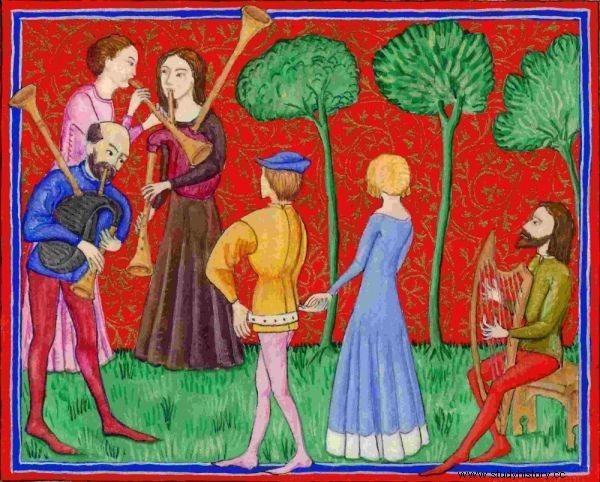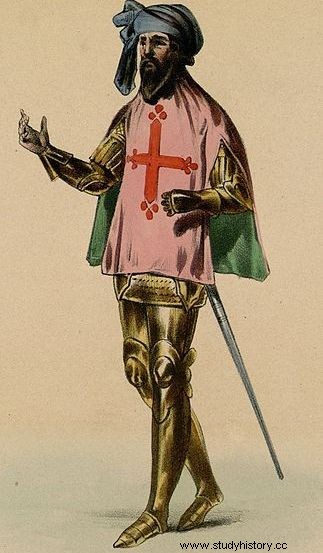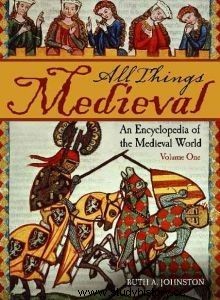We all take care of the hands, swing in a circle. Or better! Each grabs the neighbor's elbow and stomp stomp, one step to the right, two steps to the left and the circle turns. Sounds like a description of dancing fun for older kids? Maybe, but that's how people danced in the Middle Ages. Until a certain crusade.
Little is known about medieval dances. The paintings and drawings show dancing figures, but someone forgot to add to them a detailed description of movements, gestures and rhythms ... Many things can be guessed, some can be reconstructed using the knowledge of ethnologists, and the rest remains a mystery. We know for sure that representatives of all strata of society danced on various occasions, such as weddings, fairs and holidays. In the beginning, the steps and layouts were very simple.
Everybody dance now!
The most popular dances in the Middle Ages were charles. They were danced in larger groups with singing, holding hands or… elbows. One of the dancers cheerfully sang the following verses, and the rest of the recurring chorus. Although the games, in which the carole played the main role, were organized on the occasion of the holidays, the content of the songs was really dirty. And although we have not been able to get acquainted with these indecencies personally, we have no reason to disbelieve Ruth A. Johnston, a medieval scholar, who gives such information in her lexicon of this epoch. Anyway, not to be too monotonous, Karol was danced in two ways.

Lady and knight. Is it while dancing estampie?
Farandola, by far the most popular in Provence and sunny Italy, was the "procession" version. The dancers held hands in it and danced with the person leading the entire group. Such fun always took place outside, in the garden or on the town square. According to the accounts of farandola, various figures were performed in this dance, such as "threading a needle" or "snail". There was no time for complicated steps among these dances, and the participants moved by walking or jumping up and down.

Count Raymond VII of Toulouse wanted to defend the independence of his lands, and on the occasion of the lives of thousands of Cathars living there. Unfortunately, he lost the war, and the lands of the south of France, devastated by long wars against Albigenses, were joined by his lands.
The second version was branle. For a change, it was danced in a circle. The dancers held hands, and in the center of the circle stood one of them leading the party. As for the steps, they probably changed depending on the melody. Ruth A. Johnston writes that the dancers were step left, step right, left, then jumped up and kicked out . It may not be a very complicated sequence, but thanks to it the dancers stayed in constant motion. The occasion for branle was, for example, Christmas, when it was danced - let's say - in the main hall of the castle.
What does the crusade have to do with it?
It was completely different with the estamp. Unlike most dances of the time, they could not be danced forever. The pieces invented by Provencal troubadours had their beginning and end, consisting of a combination of faster and slow parts. The estampie differed from other dances mainly in that instead of the group dancing to the rhythm, a couple was observed. The lady with the knight danced. the steps were probably not much different from those of the branle, and the pair moved forward, backward and side to side.
One of the European religious wars contributed to the spread of these dances in Europe and their evolution. In Provence, whose language was the language of medieval troubadours, as in neighboring Languedoc, the heresy of the Cathars was spreading. The Catholic Church tried to counteract it in various ways. When excommunications and other similar measures failed, the pope turned to the "secular armed arm" for help and launched a crusade against the Cathars. Heretics who rejected violence would have become an easy opponent to defeat were it not for a rebellious nobleman. The Count of Toulouse and Margrave of Provence Raymond VI opposed the invaders of his estate.

This article is based on the book by Ruth A. Johnston "All things medieval…".
The hostilities that swept through the southern lands in a wave destroyed them completely. For many years the troubadours who kept themselves entertained by people had nothing to look for there, so they went to other parts of Europe, to Italy, the Reich, England and northern France. During these wanderings, the estampie has evolved. It became an inspiration and a starting point for later European dances. Over time, instead of spontaneous bouncing to the rhythm of singing and music, the theater of studied figures and gestures began to reign in the dances.
If not for the slaughter of thousands of Cathars, Europeans would probably continue to dance in a circle, sometimes to the right, then to the left ...
Source:
- Ruth A. Johnston, All Things Medieval. An Encyclopedia of the Medieval World , vol. I, Greenwood, Oxford 2011.
